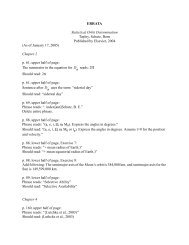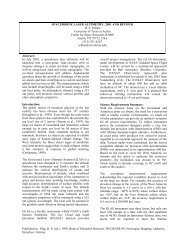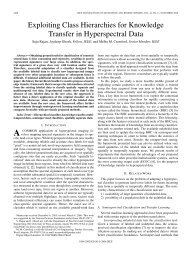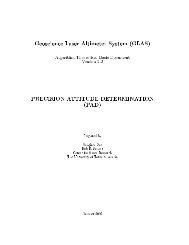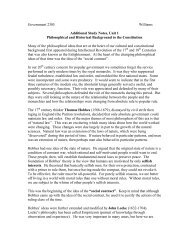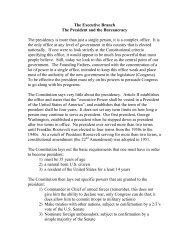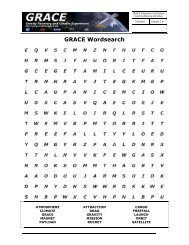MODIS Collection 5 Active Fire Product User's Guide Version ... - FAO
MODIS Collection 5 Active Fire Product User's Guide Version ... - FAO
MODIS Collection 5 Active Fire Product User's Guide Version ... - FAO
You also want an ePaper? Increase the reach of your titles
YUMPU automatically turns print PDFs into web optimized ePapers that Google loves.
7.7 Global Monthly <strong>Fire</strong> Location <strong>Product</strong>7.7.1 Can I use the MCD14ML fire location product to make my own gridded fire data set?Yes, but please see the caveats in Section 6.1.1 first. If done carelessly you may end up with severetemporal and spatial biases in your gridded data.7.7.2 How many lines are in each MCD14ML product file?This size of each product file depends on the number of fire pixels detected each month but typicallyvaries between 200,000 and 500,000 lines.7.7.3 Are persistent hot spots filtered out of the fire location product?No. Unlike the CMG fire product, static, persistent hot spots are not removed from the MCD14MLproduct.7.7.4 The MCD14ML ASCII product files have fixed-width, space-delimited fields. Is therean easy way to convert these to comma-separated values (CSV) files?Yes. In Unix, Linux, or Mac OS-X you can use the tr command to do this. Here’s an example:tr -s ’ ’ , < MCD14ML.200805.005.01.asc > MCD14ML.200805.005.01.csv7.7.5 How can I compute the scan angle given the sample number in the MCD14ML product?The scan angle θ (in radians) can be calculated from the value in the sample column as follows:θ = s × (sample − 676.5), (14)where s = 0.0014184397. (See section 7.4.6 if you are also interested in the approximate size of thepixel at the Earth’s surface.)55



